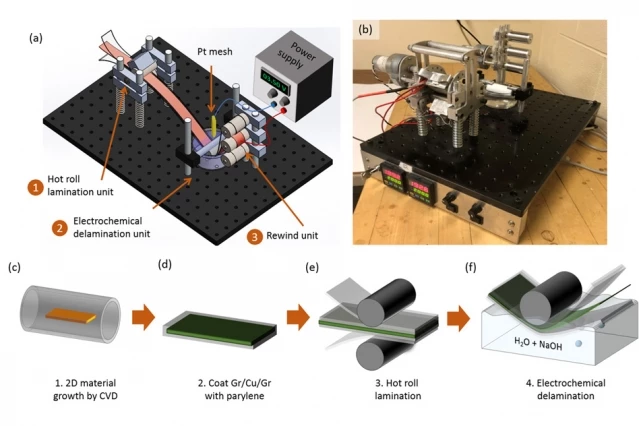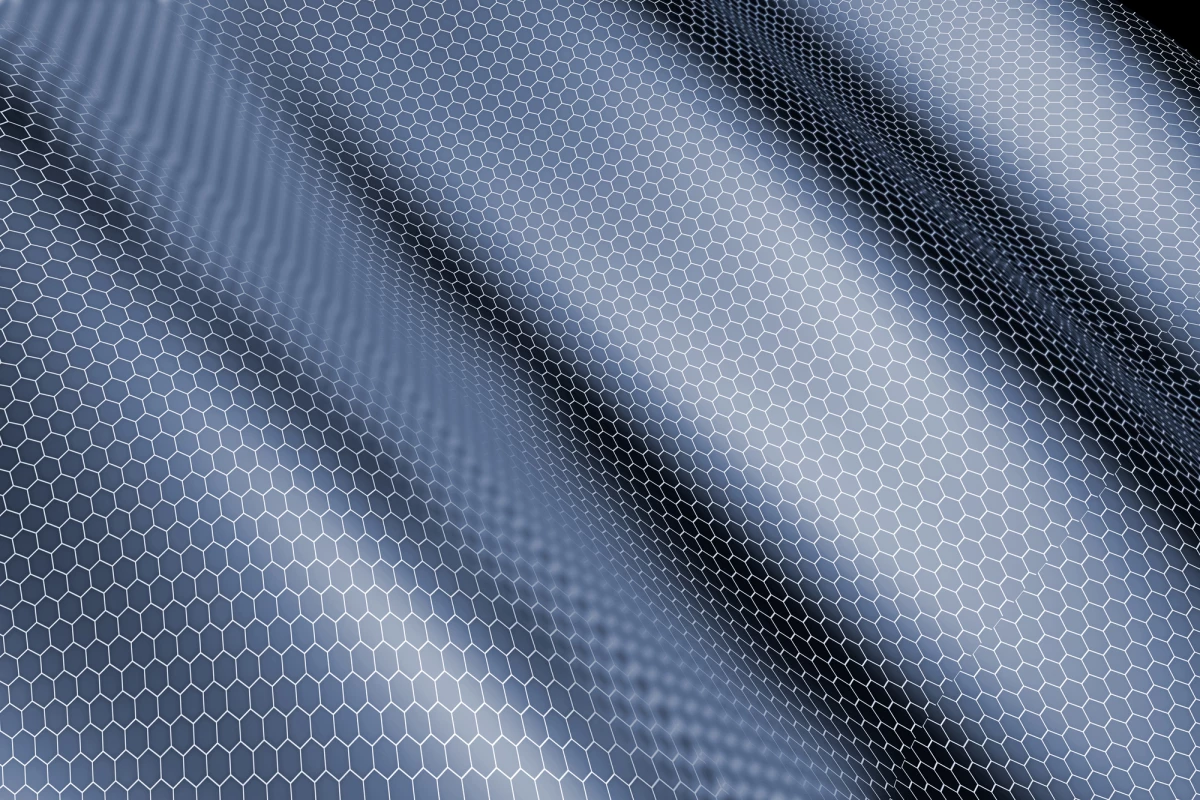Graphene may be a versatile material, but it remains very tricky to produce in large amounts. Now, an MIT team has found a new way to make large sheets of graphene in a roll-to-roll process, by depositing it onto a substrate that can easily be peeled off. This advance could allow for transparent graphene electrodes on solar cells.
Currently, one of the best methods for making large sheets of graphene is a process called chemical vapor deposition (CVD). Basically, graphene is “grown” on the surface of a substrate material, usually by feeding in methane and hydrogen to trigger a chemical reaction that causes carbon to settle on the substrate.
One of the most common substrates is copper, but the problem is that graphene clings a little too readily to it. That makes it hard to peel off without creating tears, wrinkles and defects in the sheet. These reduce the conductivity that makes graphene such a useful material in the first place.
For the new study, the MIT researchers found a way to keep the graphene intact – add a buffer layer between it and the copper. This new layer is made of a polymer called parylene, which sticks to the graphene at the atomic level, so it can bend and flex and maintain its electrical conductivity. Better yet, the parylene can be deposited onto the substrate first in the same way as the graphene, making it fairly easy to incorporate into the process.

“Now we are able to reliably manufacture large-area graphene sheets, transfer them onto whatever substrate we want, and the way we transfer them does not affect the electrical and mechanical properties of the pristine graphene,” says Giovanni Azzellino, an author of the study.
To demonstrate that the process works, the team used it to create a solar cell. The graphene-and-parylene sheet was used as one of the cell’s electrodes, not only for its conductivity but because it’s transparent.
The team measured that the thin film allowed almost 90 percent of the visible light to pass through. It was also found to have a high power per weight – about 36 times better than indium tin oxide, the current leading material for flexible thin film electronics. Best of all, graphene is far cheaper and more abundant.
Parylene is also already widely used in electronics, so it won’t require any major shakeups to supply chains, processes or equipment. The team says that the new technique could be the key to unlocking graphene’s potential.
“Ultra-lightweight graphene-based devices can pave the way to a new generation of applications,” says Azzellino. “So if you think about portable devices, the power per weight becomes a very important figure of merit. What if we could deploy a transparent solar cell on your tablet that is able to power up the tablet itself?”
The research was published in the journal Advanced Functional Materials.
Source: MIT




